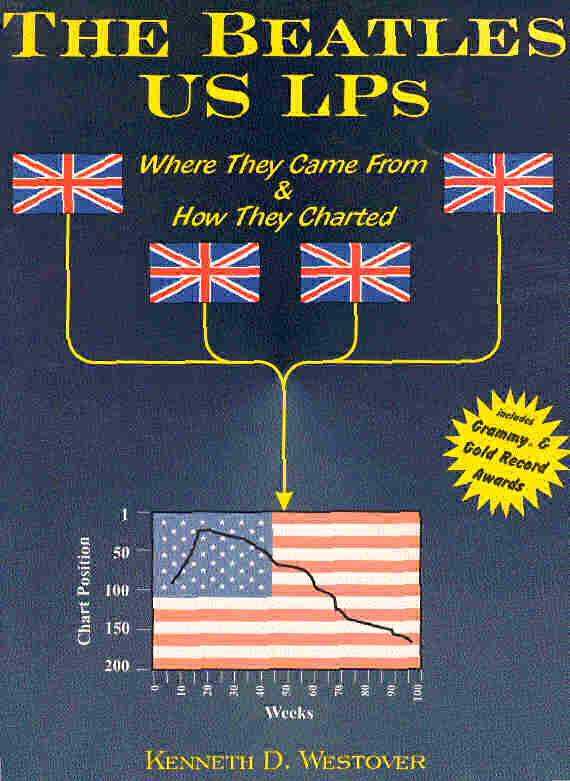Goldmine
An alternate title for this book could have been The Beatles: An Illustrated
Guide To The U.S. LP's, not because this book contains photographs
of the group's album jackets (in fact, there is not even one actual photograph
featured herein), but rather because this volume relies upon a vast assortment
of tables, charts, graphs and other visual displays tracing the evolution
of The Beatles' American albums back to their British origins.
In all, more than 40 individual U.S. and U.K. Beatles albums are dissected,
transformed and reassembled before the reader's eyes. To achieve this,
the author has employed a variety of visual layouts in which to present
this material. For every LP there is an Album Contents Table, consisting
of CD track number, LP side and cut number, song title, running time and
composer credit. Cover versions also list the original year of copyright
to indicate how recent the influence was on The Beatles. Each album also
includes a special Comments section, containing or more paragraphs of information
relative to the LP and its contents. Also featured is the Label And Sales
Table, indicating original record label, catalog number (for mono and stereo,
where applicable) and gold and platinum record award data.
Without question, the main attraction of this work centers around the
transformation of the group's original British records into their American
counterparts (largely at the hands of Capitol Records). To successfully
illustrate the paths taken by these recordings, the author has devised
a clever set of display tables (coined "fan-ins" and "fan-outs" since each
resembles a hand-held fan), in which the reader can literally follow the
arrows from table to table, tracing the route of these songs as they made
their way from EMI Records in England across the Atlantic to Capitol Records
in the United States. These "fan-ins" and "fan-outs" should prove very
helpful, especially for younger fans who may be less familiar with the
original U.S. vinyl albums. Even the more serious Beatles scholar or first-generation
fan will be pleasantly surprised how useful and even entertaining many
of these displays can actually be.
Somewhat less successful is the Chart Performance Graph accompanying
every LP. This is essentially a line graph, tracing the rise and fall of
the album on the Billboard album chart. Not surprisingly, almost every
album rises to (or near) the top of the chart in the earliest weeks and
then begins its gradual downward descent, until it eventually drops off
the chart many weeks later. Entry date and position is listed for each
release, along with the peak position attained. However, the remainder
of the chart positions are visual approximations, since it is impossible
to ascertain the individual weekly rankings utilizing a line graph. Nevertheless,
this is the first Beatles book to employ such a visual technique for tracking
a record's chart run.
Several appendices and additional information tables are also included,
among them: U.K. and U.S. releases and timelines, compact discs, U.K. and
U.S. singles, U.K. EPs, Vee-Jay Records releases, Vee-Jay Records company
relationships and lawsuits, Top U.S. chart positions, RIAA and Grammy awards,
Cash Box album chart graphs, Billboard and Cash Box chart
performance tables, Song-to-LP and CD list (a total of 214 Beatles songs),
and a glossary of useful terms.
Although much of the material featured in The Beatles U.S. LPs
has been presented elsewhere before, having all of this cross-referenced
record data available in one single volume is certainly a helpful plus,
and the numerous displays, charts, graphs and tables certainly makes for
one of the more interesting and unique Beatles books to appear in quite
some time.
(by Mark Wallgren in Goldmine #497, August 13, 1999.
This is a review of the first edition, 1st printing)
|

